-
Posts
19,727 -
Joined
-
Days Won
1,568
Content Type
Forums
Detector Prospector Home
Detector Database
Downloads
Posts posted by Steve Herschbach
-
-
Metal detectors for prospecting originally were just coin detectors with a different label. My first metal detector in 1972 was a White's Coinmaster 4. My next was a "prospecting detector", the old White's blue box Goldmaster. Even then I was curious about what made them tick, and my first lesson in detector marketing was that the Goldmaster had the same circuit board in it as the Coinmaster! White's just put the same board in a larger box and called it by another name.
Those old machines were very poor since they could not ground balance, but even then prospectors found a large nugget now and then using them. It was not until around 1976 when White's unveiled ground balancing technology in the form of the White's Coinmaster V Supreme, probably the most significant breakthrough to affect detecting up to this day. The CM5 though was a very low frequency machine running at 1.8 kHz and not sensitive to small items. True story though is I owned one myself, and sold it to a prospector who promptly went out and found a nugget weighing several ounces with it.
It was Garrett who really launched the modern prospecting metal detector era around 1980 with the 15 kHz Garrett Groundhog. The 15 kHz frequency choice was far higher than the 3 - 8 kHz standard of the day. This enhanced the sensitivity of the machine to smaller targets and combined with the ground canceling capability the Groundhog series was one of the first detectors to stand out in the fledging electronic prospecting rush just underway in Australia. The skyrocketing price of gold fueled detector sales, and soon reports of massive gold nugget finds appeared. All of the sudden all the other manufacturers wanted in on this new business opportunity.
Photo - Garrett 15 kHz ADS Groundhog in 1980, later rebranded as the Garrett Gold Hunter (click for larger version). Garrett employed the same basic circuit in several models all the way up to and including the 15 kHz Garrett Gold Stinger, only retired a few years ago.
Still, many of the new machines of the day were just repackaged coin detectors. The next big advance was what in my opinion was one of the earliest prospecting detectors designed from the ground up for that purpose. It was even part of the marketing pitch "the metal detector engineered for one job". The 19 kHz Fisher Gold Bug introduced in the late 1980's timeframe. By 1990 Gold Bugs were everywhere, and the new lightweight design with compact removable control box mounted on an ergonomic (for the times) S rod was truly revolutionary. The dual stacked ground balance control and 19 kHz low gain design was excellent at ground handling and had good sensitivity to gold nuggets.
In highly variable ground the manual ground balance machines left something to be desired, and this was most apparent in the Australian goldfields. In 1987 an upstart company in Australia introduced automatic ground tracking in the form of the Minelab GT16000. This was a real aid for prospectors in extreme ground and helped propel Minelab into view as an option for U.S. prospectors.
For me personally in Alaska, with low mineral ground and small gold, the next big event was the introduction of the 50 kHz White's Goldmaster II in 1992. This large jump in frequency made the machine shine on small gold in low mineral ground, and it was the GM2 that really caused metal detecting for gold to take off in Alaska. I could not get them fast enough initially to meet the overwhelming demand, which I personally stoked locally with my own success in using the unit.
By 1995 Fisher returned fire with the 71 kHz Fisher Gold Bug 2, which represents a high water mark of sorts in single frequency nugget detector designs. Still in production to this day, it is the detector of choice for many prospectors who choose to use a single frequency detector.
However, increasing metal detector sensitivity to small gold by boosting frequency was not helping get large nuggets deeper in extremely mineralized ground. Engineer Bruce Candy shopped a pulse induction design around to a few manufacturers but U.S. companies were not impressed with its poor sensitivity to small gold and they thought nobody would pay the money required to purchase such a device. The Minelab SD2000 was introduced in 1995. I tried one on my ground in Alaska and could run circles around it with a Goldmaster 2 or Gold Bug 2. The SD2000 simply could not detector gold much smaller than a gram in size even if the nugget was touching the coil. I could not see why people would spend thousands of dollars for such a device.
The answer of course was Australia. Large nuggets buried deep in highly mineralized ground, out of reach of the induction balance detectors. Massive amounts of gold were found with the SD in Australia, and savvy operators in the western U.S. took note. Soon SD machines were also being used in the worst soils in the western U.S. and pulse induction technology proved itself with its amazing ground handling capability.
And the rest, as they say, is history. The big failing of the pulse induction machines initially was in small gold capability, but with each generation Minelab improved on this, to the point that now a Minelab SDC 2300 is very close to the best induction balance detectors for small gold sensitivity while having superior ground handling capability. Minelab developed such a large lead in pulse induction that nobody else was able to seriously challenge Minelab in this area. To this day they are the undisputed leader in gold prospecting detectors, this reputation built largely on the back of their pulse induction machines, culminating in the GPX 5000 and SDC 2300.
This history points out two main areas where nugget detectors differ from other detectors. Higher frequencies to enhance sensitivity to small items, and advanced ground handling capability. The two things fight each other because making detectors more sensitive to small gold also makes them more reactive to the ground.
Along the way though a funny thing happened. In the quest to make better coin and relic detectors, manufacturers started boosting the frequency and gain on single frequency detectors. In my mind the 14 kHz White's MXT was the first real crossover model, designed first for coins and relics, but quite capable of finding gold nuggets in moderate soils. It's superb ferrous handling made it the machine of choice in Alaska in tailing piles, where moderate ground and massive amounts of junk were hiding some larger gold nuggets. Pulse induction machines are by and large "dig it all" units and their power worked against them in the tailing piles by finding too much deep junk. The MXT while not as deep was better at pulling the nuggets out of the tailing piles while ignoring most of the junk, and for some time the White's MXT was the number one nugget producer in Alaska.
Companies copy success, and soon everyone was producing detectors running in the 13 - 15 kHz range that were designed to "do it all". We are now buried in these type detectors from virtually every manufacturer. In the process the line between the dedicated VLF prospecting detectors and general purpose machines has blurred considerably. The 13 kHz Teknetics T2/Fisher F75 is another good example of this type of machine. The T2 really took of in Africa with its ability to hit gold nuggets well in moderate ground while dealing with hundreds of years of surface trash accumulation.
Where we are now worldwide is a nugget detector market split into three major segments:
1. The dedicated single frequency, LF induction balance prospecting detector. These detectors run at 30 kHz and higher and are marketed as gold prospecting detectors. The best examples are the 71 kHz Fisher Gold Bug 2, 48 kHz White's GMT, 45 kHz Minelab Gold Monster 1000, and to a lesser extent, the 56 kHz Makro Gold Racer. Main features - extreme sensitivity to very small gold, affordability. Main weakness - ground and hot rock handling.
2. General purpose single frequency, VLF induction balance cross-over detectors. These detectors run from 13 kHz to 29 kHz and are marketed as do-it-all detectors. The best example is the First Texas 19 kHz Gold Bug/F19/G2 variants and to a lesser extent machines like the Teknetics T2, 14 kHz White's MXT, 18.75 kHz Minelab X-Terra 705, etc. Main features - general purpose capability and trash handling characteristics, affordability, slightly better depth on large gold than units in #1 above. Main weakness - ground and hot rock handling, slightly less sensitive to small gold than units in #1 above.
3. High power ground balancing pulse induction (GBPI) detectors. This area is dominated by the Minelab SD/GP/GPX series of detectors. Main feature - superb ground and hot rock handling capability resulting in near maximum depth on most gold nuggets. Weakness - affordability, weight, trash handling, and a lack of sensitivity to certain classes of small and dispersed gold.
Disputes arise often when Australian prospectors mix with others from around the world due to a fundamental misunderstanding. In low mineral ground common around the world, particularly when dealing with small gold and lots of ferrous trash, VLF and LF induction balance metal detectors are still the machines of choice for many people. They are lightweight, affordable, handle trash well, and in low mineral ground they find the gold. This is hard for people who only detect in the worst soils to comprehend.
In locations where ground mineralization and hot rocks impede the performance of the single frequency detectors, ground balancing pulse induction machines are dominant, with operators of LF and VLF detectors being at a severe disadvantage.
The truth is both types of detectors have their place, and many if not most serious prospectors own both a pulse induction and a LF/VLF detector. They complement each other well.
The Minelab GPZ 7000 really is something new. It in reality bears a closer resemblance in some ways to a super VLF as far as its operational characteristics than it does a pulse induction machine. It blurs the line between the two, and promises to do so even more in the future because in theory at least full discrimination can be added to the underlying technology. I look at the GPZ as being a crude first generation device that will undergo enhancement over the next decade or more. Other hybrid technologies loom on the horizon and eventually we will have detectors that combine most of the features currently available in separate classes of machines into single detectors, while advances in battery technology promise to bring the weight down.
To summarize, what sets dedicated prospecting detectors apart is either extreme sensitivity to small targets (less than 1 grain or 1/480th Troy ounce sensitivity is now common) and/or the ability to handle the very worst mineralized soils and hot rocks. Yet due to technological convergence there are many crossover detectors available that can serve well for those who may only go nugget detecting once a year while spending the vast majority of their time hunting for coins and relics.
For details you can always check out my Nugget Detector Review, which I update regularly.
-
You know, people like that just don't get to me like they used to. Something about being in sole possession of the ban button leads to a certain peace of mind

-
Well there are also Lunk's Zed Settings which try to achieve that smooth threshold. Another case of different strokes for different folks when it comes to settings. Lunk and I differ on settings but we share a crazy similar patience for hard core gridding that is the real trick as far as I am concerned.
All I know is what works for me and my GPZ has been set up with my Insane Settings ever since I wrote the article. I've said time and again they are not for everyone but it is the only way I run my machine. I know every nuance of the sound and I just roll along all day listening to the machine. Yeah, it is making sounds but they are not nugget sounds. I get pulled up short by nuggets, and the kicker is if I find nuggets and try any other settings before digging them up the nuggets just disappear. I have my own confidence issue knowing if I back off I will miss nuggets I have been finding, so I can't back off. I control the machine purely by controlling the coil. Moans and groans I just slow way down and use them rather than fight them - the nuggets pop right through.
But I am not going to ever make a case that anyone can or should run that way. You either come on it naturally as you are doing Jen, or not at all. For me personally I am just happy to see you finding gold, be it with a GPX or a GPZ or whatever.

-
I think the GPX is a better choice for some people and places, and the GPZ better for others. I still consider the GPX 5000 the default "safe" choice because there are places where the GPZ suffers with alkali conditions and certain hot rocks. The GPX can made to behave under almost any conditions and the coil selection is of course unbeatable. And coils can make or break the hunt in some places.
People coming from a VLF straight to the GPZ probably feel more at home than longtime SD/GP/GPX users making the same move.
-
Yeah, it did the same to me - apparently everyone has been booted off and has to sign in again. be sure to check the "Remember Me" box!
Here is one of the new features. Instead of the "like" button they now have "Reactions". From Invision:
IPS Community Suite has long had a reputation system; first we had a simple up/down system, later updated to introduce a Likes system as an alternative. Whichever system you chose to use, it tied in with our reputation system.
We're pleased to introduce the latest updates to the reputation system, and it's something that has been requested for quite some time: Reactions.
Quite simply, reactions allow users to offer more fine-grained sentiments towards content than a simple up/down or 'like'. They are now in common usage on social networks, and so users expect to be able to be more nuanced in their response to something they see.
Let's see how they work in a post, and then cover the options you'll have available.
What you see above is the default setup for a site that has used the Like system in version 4.1. We include 5 reactions by default:
- Like
- Thanks
- Confused
- Sad
- Haha
If you currently use the older style up/down reputation system, don't fret - you'll still get the new reactions on upgrade, but they'll be disabled by default and instead the new reaction UI will show up/down reactions. This gives you the flexibility to decide which of the new reactions, if any, you want to allow.
So, those are the basics - but what configuration options can you expect to see? First, you can of course add your own reactions! We expect that beyond the default reactions you'd expect to find, some sites will want reaction types specific to their use-case. On an intranet, you might want to have 'agree' and 'disagree' reactions for staff to use when responding to discussions. On a gaming community, you might replace the icons to be some graphic from a video game that means something to your particular userbase. There's a wealth of possibilities.
Each reaction you set up can be configured to adjust the original author's reputation count - a reaction can be positive (i.e. award a reputation point), negative (i.e. subtract a reputation point), or neutral (i.e. leave the reputation count unchanged). Our default set won't include any negative reactions, but you are free to configure these and new reactions to suit your own use-case. A user's total reputation count is still shown alongside their content and in their profile, of course.
If you don't want to use the new reactions for whatever reason, you can disable all of them except Like, and it'll behave just the like 4.1-and-earlier system:
-
Wow, just did the latest update to the forum software and was not prepared for the drastic change in the look. Blue shades went away and now more white and gray. Not sure I like it. Lots of other feature updates I have to dig into and look at. Anyway, if you got caught by surprise so did I.
-
Nice find Mike. I always enjoy looking at specimen gold. It is so rare compared to the vast volumes of barren quartz we swing our coils over. In fact I am surprised at just how much quartz I swing my coil over and how rare it is to ever have even one sound off with even a tiny bit of gold. Certainly quartz is often found with gold, but there is a stunning amount of barren quartz out there.
That one looks like it may clean up nice and make a good paperweight!

-
Thanks for taking the time and making the effort to type that all up Jen. I needed a little pick me up and you just provided it!
-
Really interesting little book - thanks for posting.
Alternate download site with various formats https://archive.org/details/goldnuggetfamous00hurlrich
-
From https://www.minelab.com/usa/go-minelabbing/news?article=315332
"We are very excited to announce that our newest metal detector will be unveiled at Detectival UK Rally on Sep 16th, 2017. Detectival will be held from the 15th to the 17th of September on 1,000 acres of undetected land close to the medieval market towns of Burford and Charlbury, approximately two hours outside of London.
This event, proudly sponsored by Minelab, will also be a great opportunity to learn more about our new technology, meet with Minelab staff for product demonstations and participate in token hunts with other metal detecting enthusiasts from across the globe! Best of all, all proceeds from the event raffle will be given to two charities: Asthma UK and the Lullaby Trust."
-
Brandon Neice i.e. "Dr. Tones" discusses metal detecting for gold jewelry...
-
They told us right from the start what the plan is http://www.detectorprospector.com/forum/topic/497-nokta-announcement-makro-acquisition/
On 12/16/2014 at 6:18 AM, Nokta Detectors said:With the new products we are planning to launch between 2015-2017 (Pulse Induction detectors, new technology VLF and pulse imaging systems, hybrid VLF detectors, entry-level detectors, walk-thru security detectors, mine detectors etc.)
A waterproof detector, a multifrequency detector, and a PI detector would all be natural progressions at this point. I for one do not expect Nokta / Makro to sit still. Dilek has explicitly mentioned both a PI detector and waterproof detector in past posts. As fast as they move you can bet 2018 will not pass without something new being announced.
No, I have no special knowledge on all this. Just educated guesses based on past statements.
-
-
You would think the Federal courts would also hate people knowingly and purposefully trying to avoid paying the Federal government proper filing fees and annual rents by continuously repapering claims at the recording office level. Refiling over and over without ever advancing to the next step at BLM would seem to be obvious proof of what is up, but the way you make it sound Barry the courts could not care less?
-
Great reporting ophirboy - many thanks. You hit the nail on the head. The Gold Monster is a very High Gain detector and taming it via appropriate sensitivity settings is critical. With the GM1000 more so than other detectors lower sensitivity is often better.
Nice nugget!
-
Thank you everyone for the kind comments. It does help make four hours of two finger typing worthwhile!
It is very often the case when I lay hands on a new Minelab that I scratch my head and wonder what they were thinking about certain things. The initial impression can sometimes be underwhelming. Without fail however as I use them and learn them I become more impressed with the only thing that really counts - the ability of any new Minelab gold detector to put gold in my pocket.
I strongly believe that all detectors have strengths and weaknesses. It seems to be a badge of honor for many people on the internet to focus on the weaknesses. In fact some people do not seem to consider any review of any detector to be legitimate unless it is liberally sprinkled with commentary about how the machine fails in various ways.
That is just so easy. I can tear any detector apart. Pick any detector, and I could tell you how badly it sucks in various ways. Especially if I take the attitude that the only thing of importance is my needs, wishes and desires. The fact that what one person does not like may very well be just the ticket for a lot of other people is lost on the "Debbie Downer" crowd. People betray a small minded provincial attitude when they declare a detector no good when others around the world are able to use the very same detector successfully.
I on the other hand take great pride in the fact that you can hand me almost any decent detector and I will go out and make it perform. I do that not by focusing on what detectors can't do but by determining what they do best and then leveraging whatever strengths they have to my advantage. This does often take some time and effort in using the machine enough to see where it really shines.
I also think it is inappropriate for me to look down on anybodies choice in a detector model. I would rather try to genuinely help that person out with being successful with whatever detector that fits their circumstances in life, unless it is wildly inappropriate for the application. I have noted an unfortunate tendency on some forums for PI owners to basically rain all over VLF owners when they ask for help or advice, the answer often being "you wasted your money - buy a REAL prospecting machine". Oh really. That may be locally true but worldwide VLF detectors have produced and continue to produce tremendous amounts of gold.
Long story short the Minelab Gold Monster is another detector that has grown on me the more I use it and become more familiar with it. I just seems easy for me to find gold with it. Yeah, it's a VLF with the limitations inherent in the technology but there are strengths also in sensitivity to the tiniest gold and in discrimination that can be very useful, and all in a simple, affordable detector. Certainly there are places where it will struggle and it is not for everyone, but for me at least and in Nevada in particular it is a sweet little detector.
-
 1
1
-
-
Fabulous results Jin, congratulations! The 4500 is a real bang-for-the-buck detector.
-
Excellent Peg, nice little pile of gold there! I'm looking at those flying dog ears also thinking that's one happy pup!
-
I am just back from a little detector outing and while I was at it I reflected on how once again I seem to do things a bit differently than other people. I am usually shy of talking about my specific settings because I am the last person to claim I know what's best when it comes to other people and how they detect. Ground conditions vary as do people's personal styles and preferences. Therefore I will include my usual caveat here that I am not claiming what I am doing is "the best" way of doing things. On the other hand I do seem to be able to make detectors deliver for me and I am willing to share how I do things in case it may help somebody else. Hopefully that proves to be the case with this post.
For me the key is knowing my detector and how it reacts on my ground. I then let the detector tell me what to do when it comes to balancing sensitivity and ground responses. The task at hand has a lot to do with it. The Minelab Gold Monster 1000 is from my perspective two different detectors in one package. There are two basic tasks I usually expect to perform with it:
1. I have an acre of ground I want to detect from end to end. This for me requires using the larger of the two coils included with the GM1000, a blunt tipped 10" DD elliptical. Due to the GM1000 being a very high gain detector in more ways than one, my basic goal here is stability. I want the machine to be well behaved so that I can cover ground relatively quickly without having to deal with spurious false signals that require analysis. I am going to sacrifice a little theoretical "hots" in order to efficiently cover large areas, areas that may or may not contain gold.
2. I have a 20 foot by 20 foot area that I already know has small gold in it. My goal here is not to cover ground but to clean out the gold. This will at minimum mean running the Gold Monster as hot as possible, and may very well include going to the smaller of the two coils, a 5" round DD. However, I can find gold down around the 1/10th grain (480 grains per Troy ounce) region with the 10" coil and it will hit the larger bits at greater depth in milder ground so I am generally going to stick with the 10" coil unless I really am trying to get the very last flyspecks.
What follows is predicated on the moderately mineralized ground of northern Nevada, where alkali (salt) ground is as much or more a consideration as small hot rocks. Even small depressions like a hoof print will collect water during a rain, and when almost but not completely dried the small damp spot may create a positive signal if the Gold Monster is running at high sensitivity levels. Once again I will warn that the specific settings I mention will vary under different ground conditions.
Under the first scenario where I am trying to cover large areas I have found both manual sensitivity and auto sensitivity to be useful. Deciding between the two is as simple as knowing how variable the ground is. If the ground is relatively homogenous with minimal variation then manual sensitivity can work very well. If the ground gets too variable requiring constant burdensome adjustments of the sensitivity control to keep up, then going to auto sensitivity is more efficient.
What does that mean in actual practice? Let's go over that but first I need to discuss the power up procedure. Much has been made of the necessity to hold the coil in the air as opposed to on the ground when the detector is first powered up. I will admit I am perhaps less stringent as regards that procedure. If I have any nearby electrical power sources, like a power line, cell tower, another detectorist nearby, etc. then I will raise the coil off the ground and point it directly at the tower or other person. This gives the GM1000 the best chance of "seeing" the interference during the few seconds frequency scan so possible interference can be eliminated or at least reduced as much as possible.
However, in the interest of being completely honest, I have not found the Gold Monster at 45 kHz to be particularly sensitive to electrical interference and while in the middle of nowhere Nevada I often just turn the machine on and go about my business will no ill effects noted. The raise coil and point at nearest electrical source is a very good habit to develop, but in my experience at least it is not as critical for me as it appears to be for others.
I am always going to use the deep seeking all metal mode whenever possible. This is not just because this mode goes deeper, but also because the coil is more forgiving about reporting items that are not centered well under the coil. The discrimination mode has the net effect of reducing the overall size of the detection area under the coil. This means that when running in the iron discrimination mode more care should be used to overlap sweeps. When my goal is covering ground that little bit of extra ground coverage per sweep does add up and all metal mode helps reduce the chance a nugget will be missed on any given sweep.
The Gold Monster is noteworthy in that Minelab finally seems to have realized that the speaker actually needs to be loud enough to hear! I am quite enthralled by the boosted audio and the way the smallest targets pop even with my admittedly poor hearing. In fact, the Gold Monster bangs out so loud without headphones that I will often run a notch down from the maximum volume setting - it's so loud that in quiet locations it can be too loud. The volume control is also a secondary sensitivity control in a way, and so I usually run it full out. I do this as much to help create a forced threshold sound as to enhance my ability to hear small targets. More on that later.
One of the greatest features on the Minelab Gold Monster 1000 is the automatic ground tracking. In my ground at least it is very efficient at effortlessly keeping up not only with ground conditions but in taking the edge off many hot rocks that would be problematic for other detectors. The beauty of this is that it eliminates the need to keep up with and make small adjustments to the ground balance control as would be the case with a detector that lacks an efficient automatic ground balance. I think most companies are equivalent when it comes to many features, but I do think when it comes to automatic ground tracking technology that Minelab has been and continues to be the industry leader. I was a "manual tuning only" diehard for a long time, but my experiences with the Minelab SDC 2300 in particular taught me to let go of that old thought process.
The automatic ground tracking shifts the burden to the sensitivity control as the prime operational control on the GM1000. Minelab has positioned this control close enough to the center of the control panel that it is easily manipulated up or down with a thumb press by either left or right handed individuals.
To summarize, I will raise the coil and point it at the nearest electrical source and then I will power the detector up and wait until it completes the frequency scan. The Gold Monster defaults to the last settings and so my machine will already be in all metal mode, but if not I will switch to that. From there I will go to manual sensitivity setting 7 and do a short walk around sweeping the coil over the ground. For me this means the coil is sliding lightly over the ground or no more than a few millimeters over it.
So far for ground I have been frequenting the magic settings are 6 - 7 - 8. With the Gold Monster at full volume what I am seeking is a very minimal amount of ground feedback. These are very soft sounds that are quite unlike the hard edged pop of a genuine target. These sounds are created by the sensitivity being so high that ground noise is just starting to overcome the ground tracking ability to silence the ground.
The problem with a silent search machine while in manual ground balance mode is that without a threshold you can end up leaving some performance on the table. If a setting of eight generates a little ground feedback, and you decide to go with 7 to make the machine completely silent, there is nothing wrong with that per se. However, if the ground changes and gets milder you may have the ability to run at a higher level of sensitivity, and without a change in the audio to alert you to a change in the ground, you will just leave the setting where it is.
In my case if a setting of 7 is completely silent, I will bump to a setting of 8, and this almost always gives me that little ground feedback I want. If 7 is too noisy, I will drop to a setting of 6 and this will probably do the trick for me. The range between each setting seems about perfect for a person to settle on a range of three settings, too little, too much, and just right. For my areas 6 - 7 - 8 are the magic numbers. For worse ground the range may shift lower, to 5 - 6 - 7.
Try and picture this. At sensitivity 7 I am just scanning along, coil lightly on the ground, with soft ground feedback, waiting for that hard little signal that even the tiniest target will generate. Then all the sudden the machine goes dead quiet. I have entered less mineralized ground. One thumb tap to sensitivity 8, and I get my "false threshold" back.
Or, at a setting of 7 the machine gets noisier. Maybe a little alkali patch or more mineralized ground. A quick tap down to 6 reduces the feedback to my desired minimal level. What I am doing is letting the ground tracking do its job, and then just bumping the sensitivity up or down a notch to ride the ragged edge of best performance for the ground.
"Gee Steve, sensitivity 6 - 7 - 8, aren't you giving up lots of depth running at 6 or 7 or anything less than 10"? My air testing...."
A pox on air tests! They have uses but have little bearing on how to get the best performance out of a detector in the field. I do like to run my detectors hot and that does often mean with some ground noise, but it has to be kept within manageable limits. For the purposes of covering a lot of ground pushing the GM1000 to the edge is good but any farther and everything sounds like a target and knock sensitivity shoots up dramatically, especially at the hyper sensitivity settings of 9 and 10. The reality from what I have seen so far is that the Minelab Gold Monster 1000 at settings of 6 - 7 - 8 will match or exceed most detectors in its class. Let's save manual sensitivity 9 or 10 for my next detecting scenario up next.
Again, a reminder that 6 - 7 - 8 is working well for me in moderate ground. In more mineralized ground it may be 5 - 6 - 7 or even 4 - 5 - 6. If you simply listen to the machine it will tell you where you need to be. Too high, too low - just right. I have actually found gold with the sensitivity as low as 3 when in some nasty salt encrusted ground. People seem so adverse to lowering sensitivity I often wonder how many would just give up before going that low. It just can't find gold set that low, can it? Yes it can. You either tame the ground or go home and even though depth is reduced you can still find gold a low sensitivity settings if that is what it takes to get stable performance in the worst ground.
So what about auto sensitivity? Simple really. If you are finding that you are having to bump the sensitivity up and down too often (you will know when that is for you) then it is time for Auto sensitivity. Auto sensitivity is different than manual in that you can trust it to keep the detector at the optimum level even if running silent. In general Auto is the silent running mode whereas Auto+ usually introduces a slight amount of ground feedback at full volume. As I mentioned earlier the volume control acts as a secondary sensitivity filter and running it lower can reduce or eliminate slight ground noise while still allowing targets to sound off loud and clear. Auto+ works best for me in most places but if need be I can drop to simple Auto for more difficult variable ground where Auto+ may get too noisy.
OK, we have been hunting as described above and get a target. What next? If you are digging everything, a good practice, then just recover that target. If it is faint, either bumping the manual sensitivity up two points or dropping out of Auto into a high manual setting can aid greatly in pinpointing and recovering the target.
What about trash? Too much and I don't want to dig them all? I am hunting in all metal mode and I rely on the meter to make a dig or no dig decision. In some ways it is a probability thing. If a few sweeps over the target from various directions produce a series of "hard left" ferrous meter responses, the target is likely ferrous. My goal is to try and coax a non-ferrous response with the meter kicking to the right. Just one non-ferrous response raises the odds you have a non-ferrous target. Even then I might pass in a trashy area, but two or more non-ferrous responses and you had better just dig it. Small nuggets in mineralized soil are fighting the ferrous content of the soil itself and in bad ground the ferrous ground response often wins. If you are looking for gold look for reasons to dig targets, not reasons to walk away. The amount of trash will help determine just how aggressive or lax you decide to be in these dig or no-dig decisions.
Running is disc mode should be reserved for situations where there is no other option. It may be needed to eliminate a certain hot rock response. Or there may be multiple trash targets per swing - you can't analyze them all. The iron discrimination mode can be a real lifesaver in these instances.
However, consider the borderline nugget that will read ferrous seven out of ten swings. That means you only have a 30% chance on a single pass over the target of having the machine give an audio non-ferrous report while in iron discrimination mode. The odds are even worse if you are not perfectly over the target, a bit too high, or swinging a little too fast. If the detector decides ferrous on that first pass, you get no sound and go right by, never knowing it was there. This is where detectors with a ferrous tone have the advantage in alerting you to every target so you can double or triple check. With a silent rejection system you get just one chance at the target and if the detector is wrong, the nugget is missed.
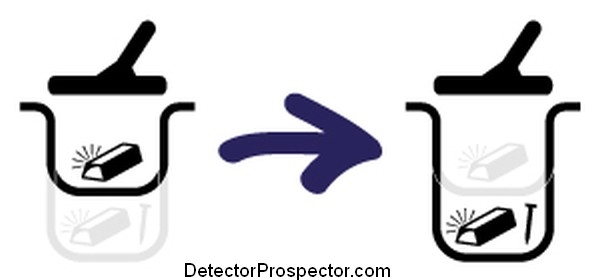
Minelab Gold Monster 1000 Iron Discrimination Mode Versus All Metal ModeAll metal is more forgiving in multiple ways, but mostly by alerting you to every target, allowing you to stop, get the coil lower if need be, slow the sweep, change the angle, etc. all with the goal of trying to coax a non-ferrous response from the target. I highly recommend that if you use discrimination you use it sparingly and conservatively, and only go to full blown iron disc mode it you must. We all have a different threshold for when that will be but rest assured hot rocks or thick trash will pretty much force the issue.
That sure sounds complicated! In practice, hunting at sensitivity 6, I am going to get a signal. If it is faint, I will bump the sensitivity a couple notches now that I am on target. Too hot for general hunting but fine for spot checks. The target response will enhance, giving much surer results on the discrimination meter, and allowing for easier pinpointing and recovery. Target in pouch, sensitivity back down two notches and I am on my way again.
For extreme ground JP has a bit more complicated method for getting back into the hunt as described here. For me personally hunting in moderate ground simply going back to my base sensitivity setting and swinging away is working fine. Again however, I am discussing just general detecting at this point, not getting the best and finest edge on the performance. Which leads me to....
...that 20 foot by 20 foot spot I want to clean out. The 5" coil has an edge on the really tiny gold and in more mineralized ground in particular it "sees" less ground and is the coil of choice for cleanup duty. In moderate ground I run the Monster at manual sensitivity 10 and much like running my GPZ 7000 fully maxed out with Steve's Insanely Hot Settings I tame the machine strictly through coil control. This means moving at a crawl, and because at sensitivity 9 and especially 10 some knock sensitivity is introduced, I employ my magical ability to keep a coil 1 mm off the ground while never touching anything. In severe ground sensitivity 9 or 10 may not be attainable at all, and as always I defer to JP and his operating procedures for dealing with really bad ground. But for my milder ground I can crank the GM1000 all the way up and even with the 10" coil hit gold down to around 1/10th grain and with the 5" coil smaller yet. Again, extreme coil control is the answer here but the catch is that you are never going to cover much ground in a day doing this. If covering ground is the goal, stick with more stable settings. But if you want to chase flyspecks (they do add up) then be very patient while working the coil and the Minelab Gold Monster is pretty amazing in what it can do.
I do hope this helps somebody somewhere. Again, all I am doing is telling you what I am doing and what is working for me. If you prefer to do something different by all means - I am not trying to say these settings are the "best settings" as in my opinion there simply is no such thing. The best settings for my wife would probably be Auto sensitivity while in disc mode. "Here honey, swing this closely over the ground, and if it goes beep, dig it up." Different ground and different experience levels mean different settings. Never be afraid to experiment. If you only use settings you find on a website and never experiment yourself you will never truly learn any detector and what works best for your circumstances. Good luck out there and above all, have fun!
More Information On the Minelab Gold Monster 1000 Sensitivity Settings
Photo below: Some gold I just found, 4.9 grams total. The top four nuggets were found with the GPZ 7000 (largest nugget 2.2 grams) and the bottom nine with the Gold Monster 1000 (smallest flake ?? gram) using the methods described above.
-
 1
1
-
-
I had to change the title on this thread Norvic. Your setup is so clean and well done I did not want people missing out on it. The GM1000 is a great complement for the GPZ 7000 in several ways and acting as a pinpointing aid is definitely one of them.
-
I will add one tidbit to the great information already presented. The old hands at the agencies have been retiring in large numbers the last few years and the rest are being encouraged to leave. These were once the same problem types long ago but years on the job has taught them a lot and they are usually more easy going. Less expensive new hires fresh out of college tend to know less of course but also have some of those youthful ideals about saving the world and such that can make them problematic. As has already been said, knowing the rules yourself, and above all being calm under fire and respectful at all times, even if you are not being shown the same respect, goes a long way in this game. I know way too many miners who just made things worse for themselves by going in with huge chips on their shoulders. It does indeed take two to "tangle". Be firm, stand your ground, and keep to the high road.
Good job Norm!
-
Nice finds but strange deal about the holes being dug out again. I love seeing mercs pop out of the ground!
-
Well, to be honest, try to describe anything in detail in writing and it can come across as complicated. For instance, describe in detail how to know which settings are best on a GPX 5000 under different conditions. I can tie my shoes without thinking but to write down the steps involved can make it sound intimidating. It's somewhat inherent in the medium if you want to be sure the information is detailed and complete.
-
Well I wish the best for you John both in health and in this adventure!


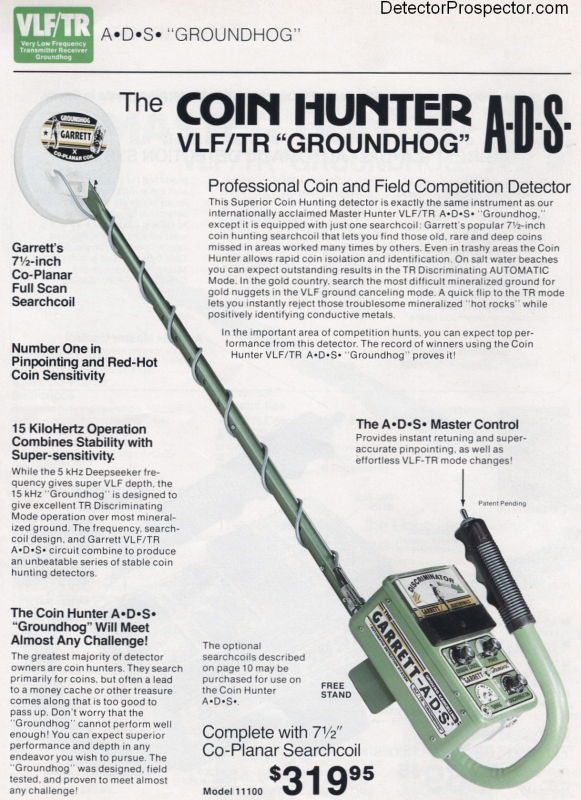
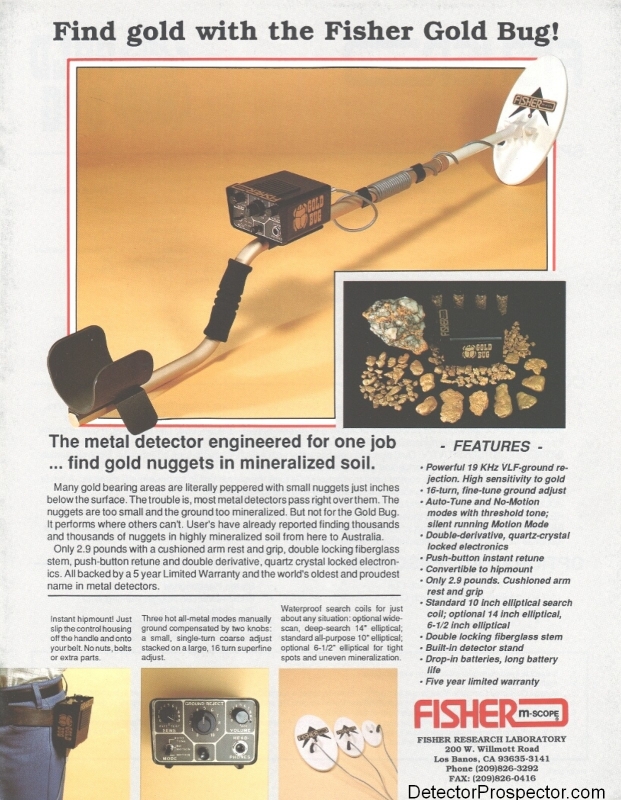
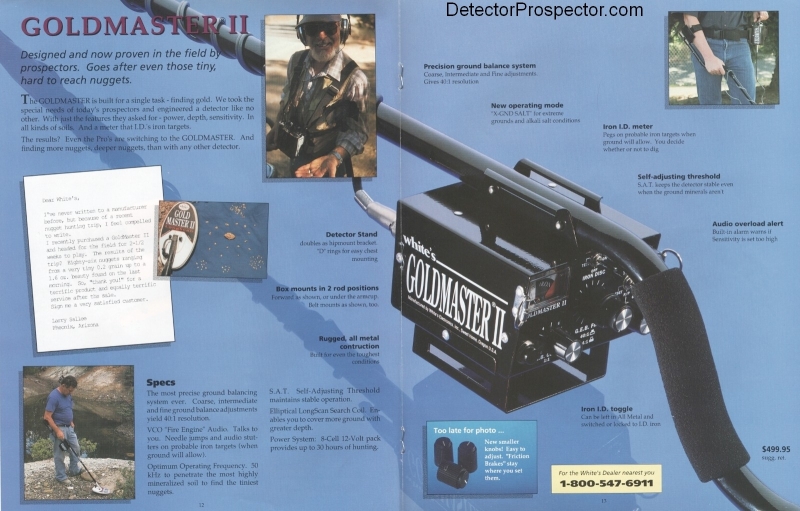
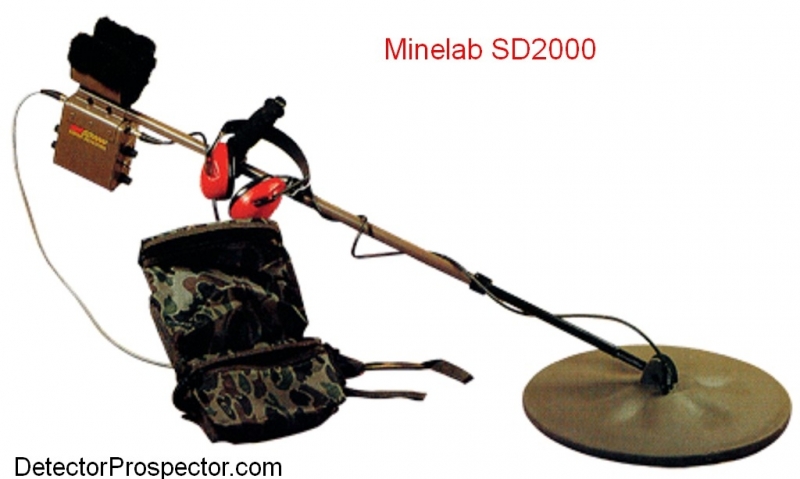


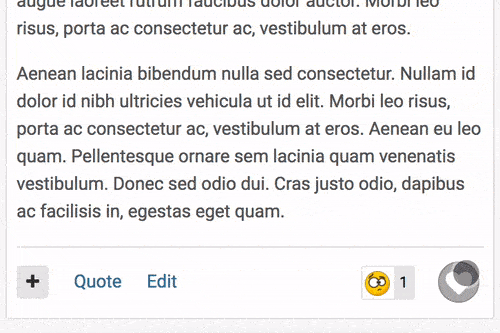
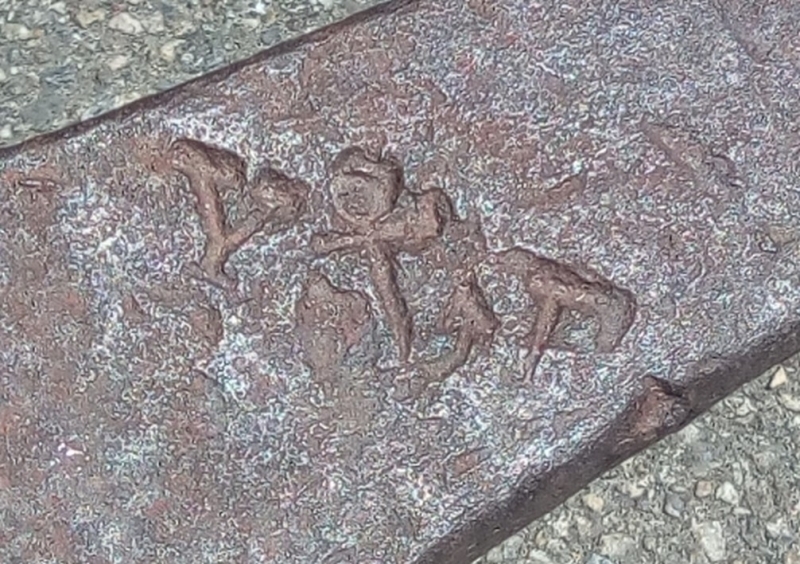
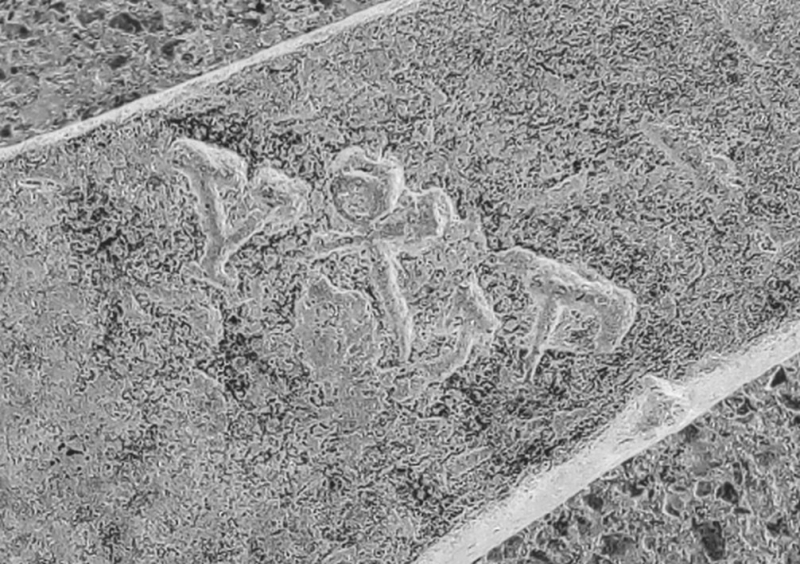
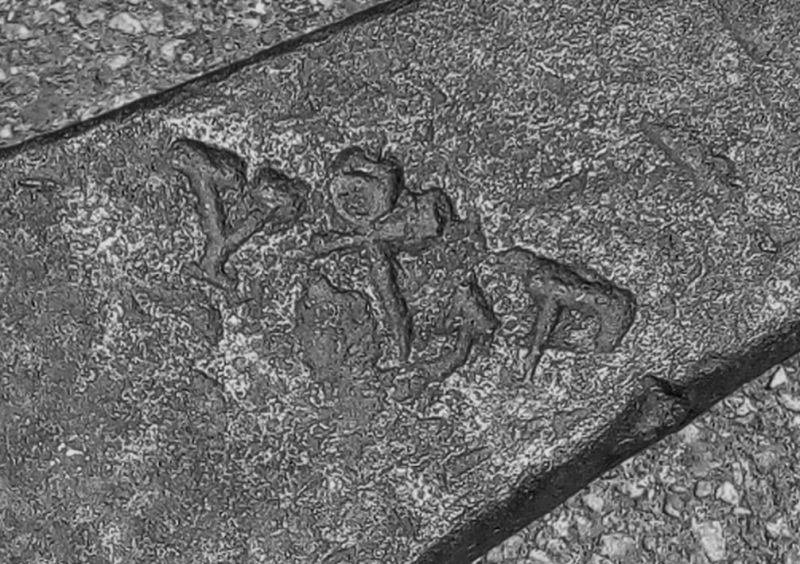
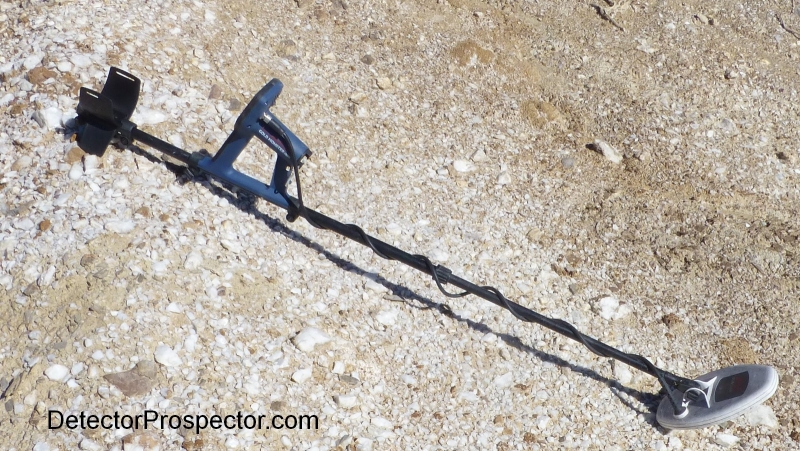
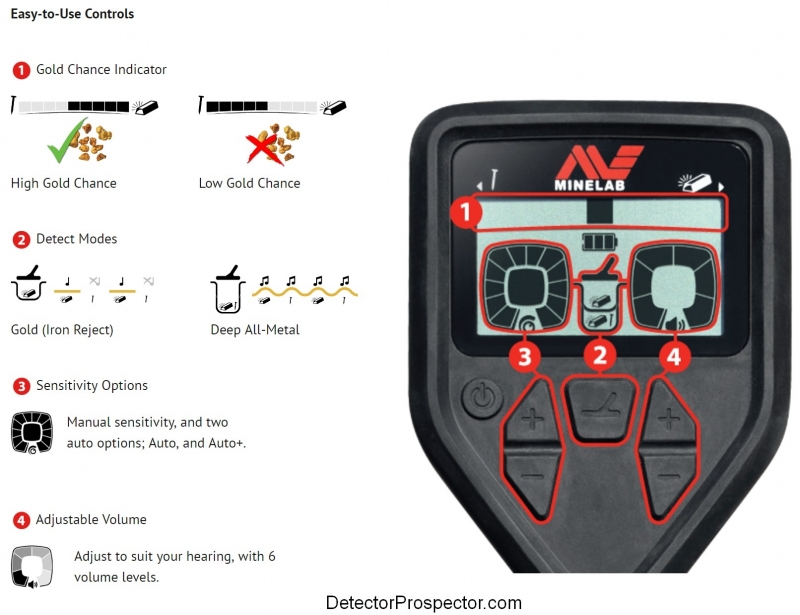
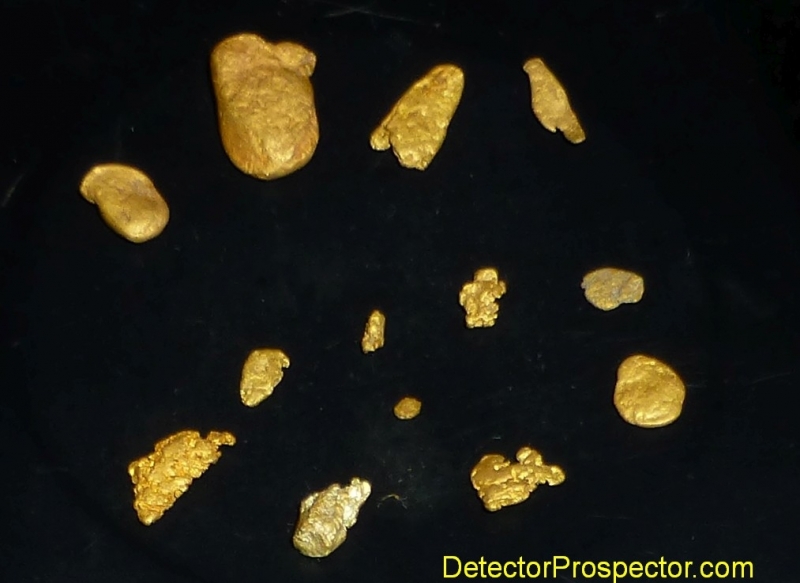
What Separates Gold Nugget Detectors From Other Types Of Metal Detectors?
in Metal Detector Advice & Comparisons
Posted
Here is a personal perspective. I use a GPZ 7000 for nearly all my nugget detecting. However, I do have uses for a VLF type detector. The first is when I get into some really trashy area, like an old camp. The old miners often put the camp right on top of the best ground so they could just walk out the door and get to work. Old hydraulic pits and tailing piles are often thick with deep nails that will have a GPZ owner digging two feet or deeper holes for as long as the back holds out.
A really hot model running at 30 kHz or higher can aid in sniping tiny gold in low mineral ground and gold in quartz specimens. Checking quartz on a mine dump is a good example.
These machines can also make good scouting detectors in very rough terrain, especially when ferrous trash is present. A good example is in logging areas in the Sierra Mountains, where steep terrain and tiny ferrous trash from old logging operations is the norm.
The big problem is in trying to find the machine that handles bad ground and hot rocks in some fashion while still retaining some sort of decent ferrous discrimination. Hot VLF detectors do not like bad ground and hot rocks, and ferrous discrimination gets less reliable as the ground conditions decline.
It is hard to find one detector that balances it all well. For me the Gold Bug 2 is the standard benchmark for performance and the only detector I have used consistently for over 20 years. A couple years ago I started using the Makro Gold Racer more than my Gold Bug 2, but that was really more about my being able to use it around town also because it does have a more extensive feature set making it more useful for general purpose detecting. I would be the first to say that a dedicated unit like the Gold Bug 2 has a slight edge over detectors aimed at more general use. The differences are small but in practice single minded focus on one task does help a detector engineer in the final goal.
Now I have tossed the Gold Monster and Deus V4 elliptical into the mix. The Deus on paper looks great but again it struggles a little due to it really being a coin and relic detector that is trying hard to be a gold nugget detector. It hits targets well enough but so far I am struggling to get clean ferrous/non-ferrous identification on really tiny bits of gold, an area where the Gold Bug 2, Gold Monster, and even Gold Racer seem to have the edge over the Deus. Jury still out there. The Gold Monster is winning some points versus my Gold Bug 2 for handling variable ground efficiently. Jury still out there.
What I will do is continue to use all these detectors for the rest of the year. In the end it is lots of things like feel on my arm, sound to my ear, and even types of batteries used that all come together. Sooner or later I look at the same set of detectors, and since I can only use one at a time, I will get to where there is one I would rather grab then the others. Certain detectors just click and some do not, and it is not always about splitting hairs over performance. They all will find gold. The question comes down to which one I personally like best, and the fun part is somebody else doing exactly the same thing with the same machines could come to a different conclusion. Think of it like you and I both go to Cabelas looking for a good pair of hiking boots. We have the same foot size and general build. Turns out though I like high tops and you like low tops. Both are valid choices. Such is the world of detectors.
The good news for me is that is all a sideshow. Day in and day out under normal circumstances my main gold getter is the GPZ 7000 with 14" coil.